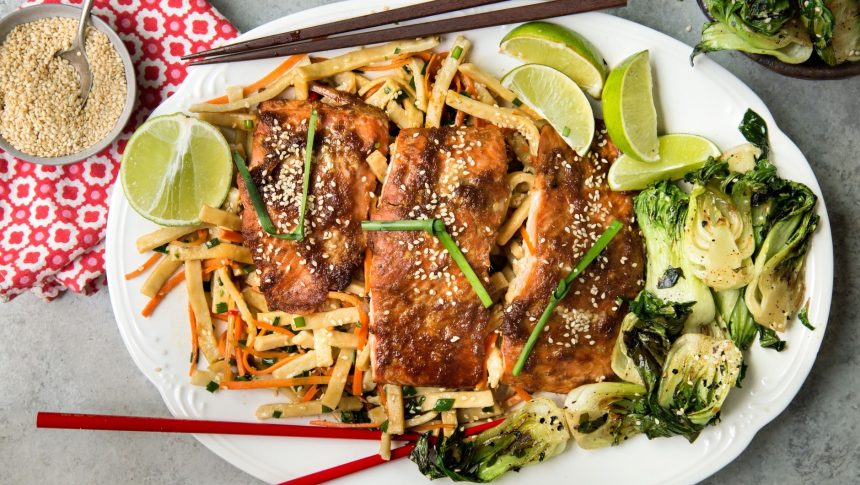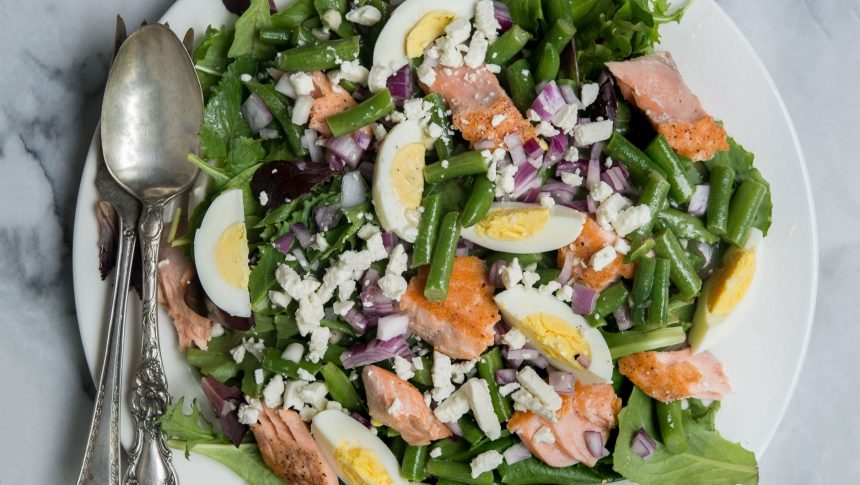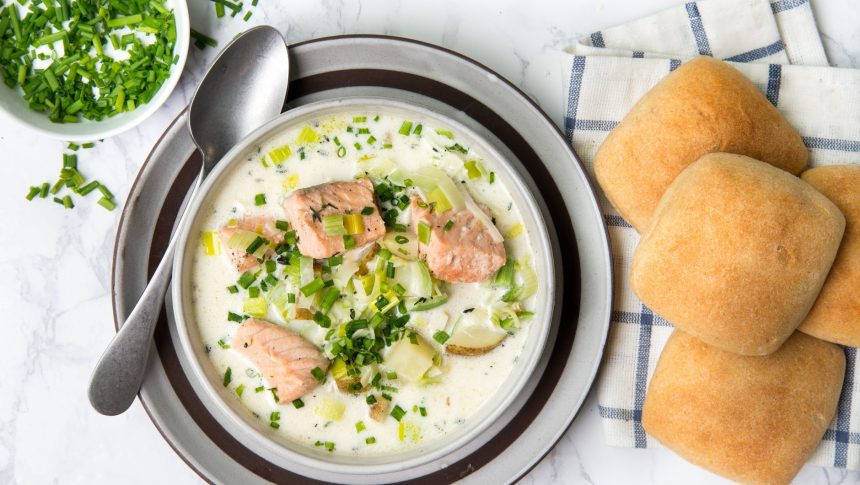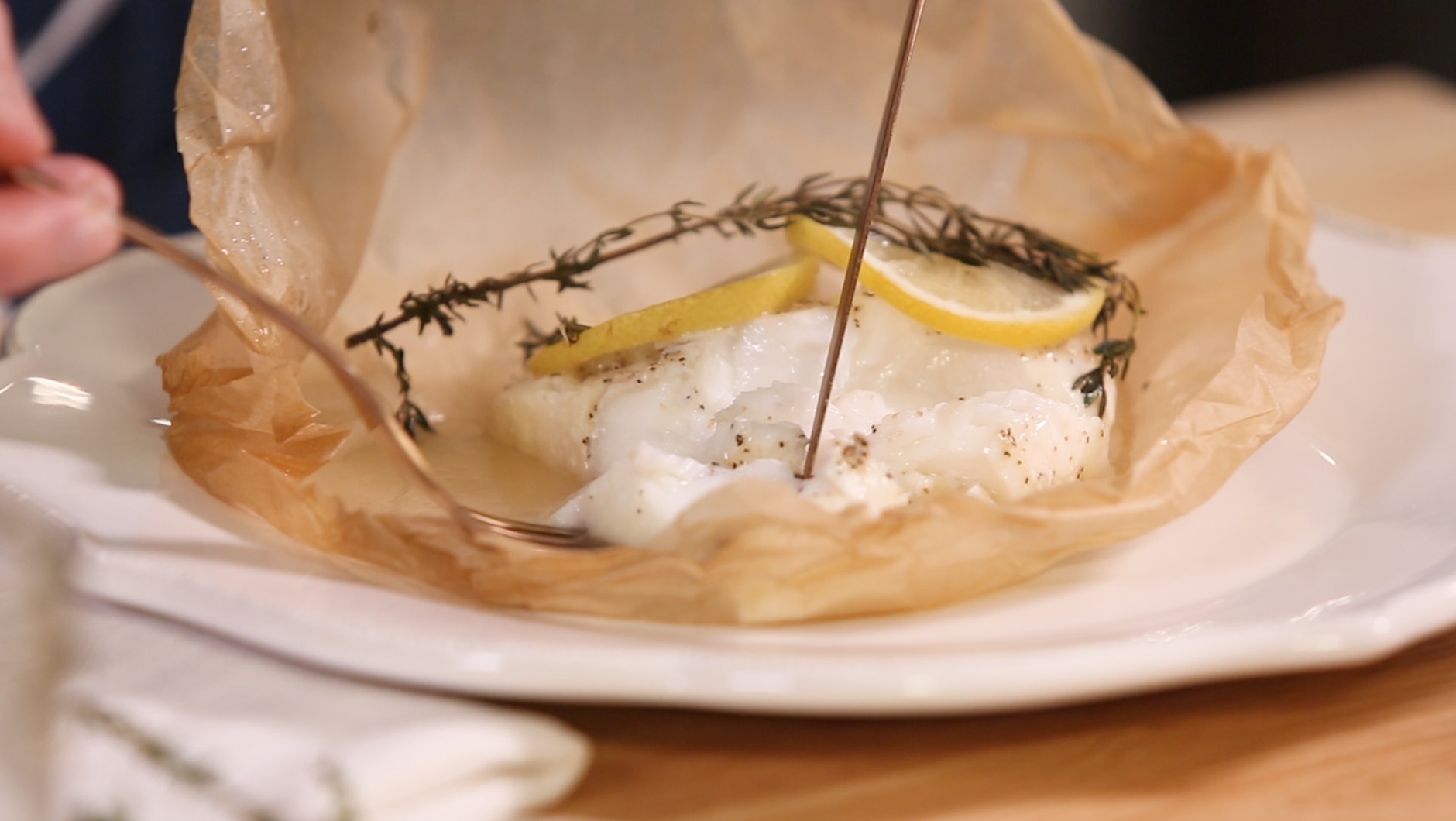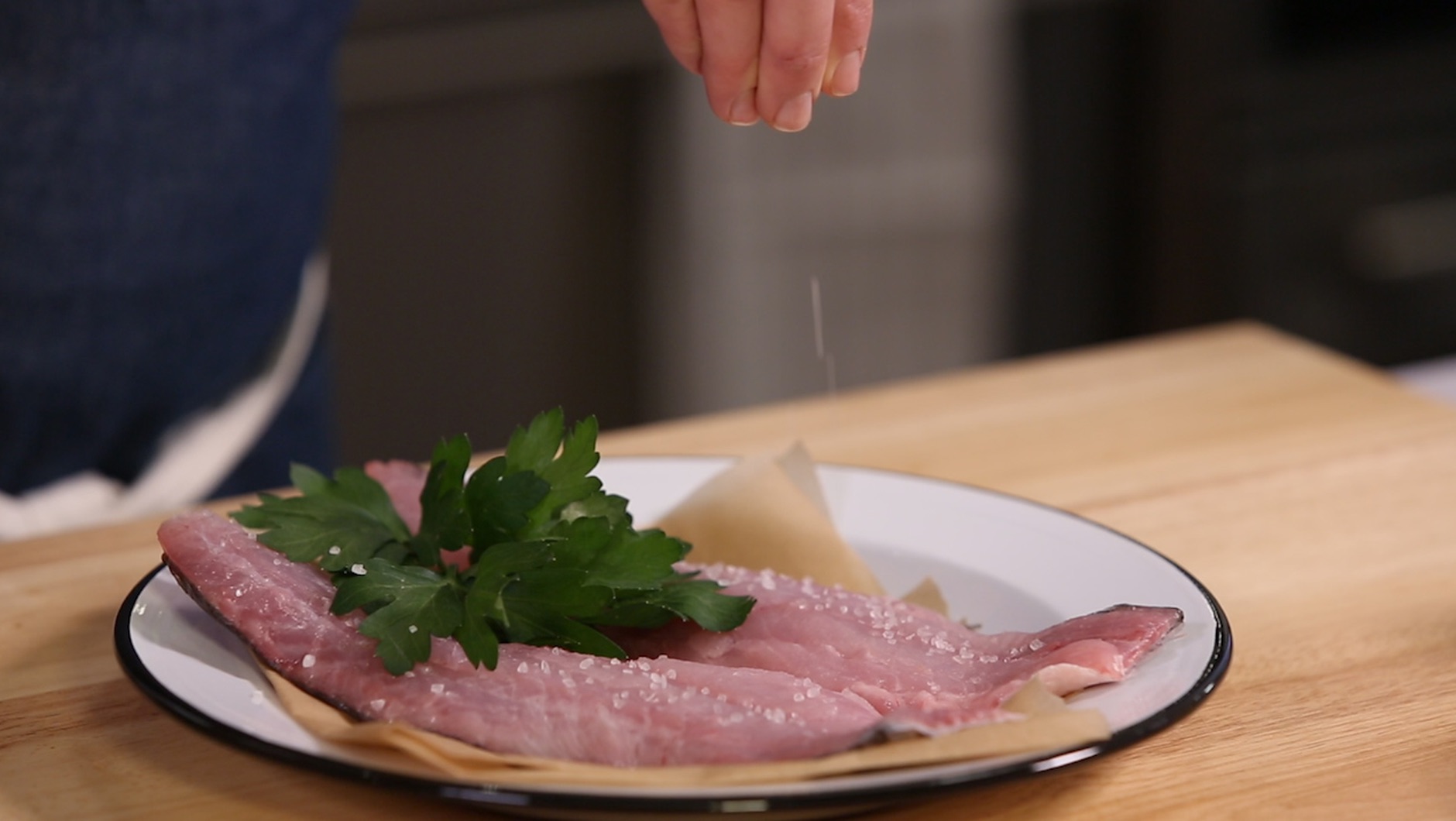It’s no secret that salmon boasts outstanding health benefits like omega-3 fatty acids, vitamin B12, and protein. Rich in texture but mild in flavor, salmon is not only incredibly nutritious but also a versatile option for people who claim they “don’t do fish.” Learn how to cook salmon at home with these easy techniques.

How to Pick the Perfect Salmon
May through September is peak salmon season, but most markets offer it year round. Buy yours from a fishmonger or at the seafood counter at your most trusted local market to assure quality fish.
- Different types of salmon have different hues of red and pink, so brighter isn’t necessarily better. Look for salmon fillets that are firm to the touch and show no signs of browning.
- Give the raw fish a sniff — it should smell clean, not “fishy.”
- Frozen vs. fresh and wild vs. farm-raised are matters of preference. Farmed salmon is less expensive and easier to find, but wild salmon is lower in calories and fat .
- Order between 4 and 8 ounces per person.
- Ask the fishmonger to cut and remove bones if they’ve not already been portioned.
- Keep the fillets tightly wrapped in the market’s wax paper and use the salmon as soon as you can.
Prepping Tips
- Always rinse and pat salmon fillets dry.
- Lightly season with salt, pepper, and/or fresh herbs before cooking, regardless of your preparation method.
- Depending on the recipe, a few hours of marinating can add great flavor.
Cooking Methods
1. Roast/Broil
- Cover a sheet pan with foil or parchment paper.
- Brush a thin layer of olive oil onto the fillets. Sprinkle with your choice of spices or seasonings, drizzle with a prepared glaze, or leave plain. Optional: Add extra flavor with a few thin slices of lemon or orange on or around the fish.
- Place the fillets on the sheet pan, skin side down.
- You can also wrap the fillets in foil or parchment packets. This method, sometimes called en papillote, helps steam the salmon and keep it tender.
- Roast at 425°F in the upper third of the oven for 10 to 12 minutes.
- Alternatively, you can broil the fish for 6 to 9 minutes, flipping it once halfway through.
- The fish is done when the thickest part of the fillet easily flakes under a fork. The salmon can be a bit pink in the center but should not look raw.
Ways to Use Roasted Salmon
- Glaze for days. A savory marinade-turned-glaze, like teriyaki or soy-honey-sesame, adds a tasty punch of flavor to takeout-inspired noodles.
- Take noodles up a notch. Tender noodles in a creamy sauce make a tasty bed for broiled salmon and spinach.
2. Pan-Fry
- Heat a nonstick pan over medium-high heat.
- Brush both sides of the salmon with olive oil and season liberally.
- Add butter or olive oil to the pan, about 1 1/2 teaspoons per every 4-ounce fillet.
- Add the fillets skin side up and pan-fry for 3 to 4 minutes.
- Flip over gently and allow to cook on the other side for another 3 minutes.
- The fish is done when it is firm to the touch and skin is nicely crisped.
Ways to Use Pan-Fried Salmon
- Have your cake. Form salmon into patties and fry them with a side veggies for a quick and hearty meal.
- Pack salads with protein. Pan-fried salmon can top nearly any salad, but works especially well with asparagus or green beans.

3. Grill
- Preheat the grill to medium, and lightly oil the grill grate.
- Brush both sides of the salmon with olive oil and season liberally.
- Place the fillets skin side down on the grates.
- To prevent the salmon from sticking to the grill, avoid moving or turning it.
- A 1-inch fillet should cook for about 8 minutes; add 2 minutes for each additional inch of thickness.
- The salmon is done when it is firm and flakes easily.
Ways to Use Grilled Salmon
- Complement with a dollop of salsa. Grilled salmon has such a great yet mild flavor, so it’s best to enhance it with a fresh salsa. See recipe.
4. Simmer
- Add chunks of raw salmon to a soup recipe toward the end of the cooking process (once all the veggies have had a chance to soften).
- Simmer gently for 4 to 7 minutes until the pieces are cooked all the way through.
Ways to Use Salmon in Soup
- Craft a classic chowder. A creamy salmon chowder, loaded with potatoes, leeks, and green herbs, is an easy, satisfying dish for dinner.

5. Leave Raw
- To serve salmon raw, you must use “sushi grade” salmon. Even high-quality salmon may carry bacteria that can make you sick if not cooked.
- Use a sharp knife to slice through raw salmon, or ask a fishmonger for assistance. Raw salmon should be clean cut without tears or ragged edges.
Ways to Use Raw Salmon
- Maki it yourself. Roll cooked sushi rice, thin slices of raw salmon, avocado, and a swipe of cream cheese in a sheet of nori seaweed to recreate a Japanese restaurant classic.
- Try spicy ceviche. Marinate raw salmon in zesty lime juice and add a jalapeño kick in a Mexican-inspired seafood ceviche.


